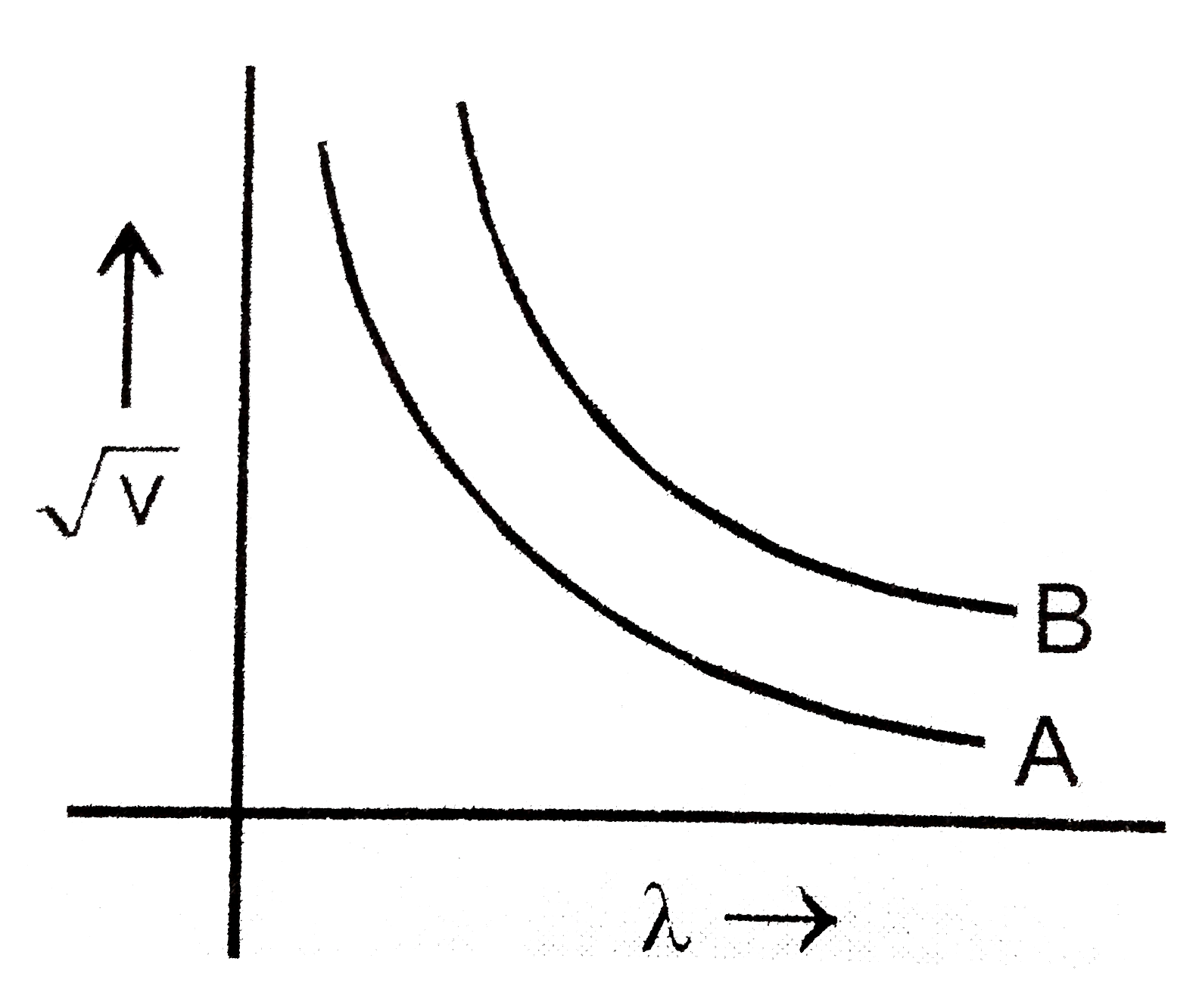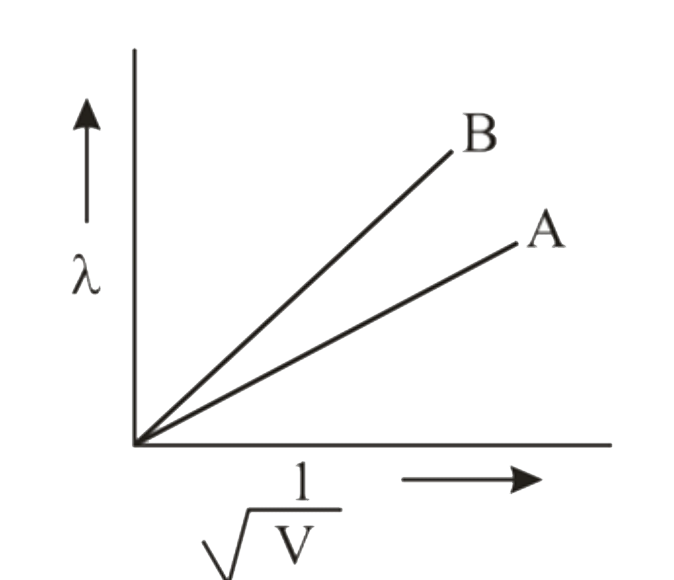For two particles A and B, curves are plotted √V against de-Broglie wavelengths, where V is the potential on the particles. Which of the following relation is correct about the mass of particles?  Solution in Telugu
Solution in Telugu
mA=mB
mA>mB
mA<mB
mAle m_(B)
The correct Answer is:B
Step by step video & image solution for For two particles A and B, curves are plotted sqrtV against de-Broglie wavelengths, where V is the potential on the particles. Which of the following relation is correct about the mass of particles? by Chemistry experts to help you in doubts & scoring excellent marks in Class 11 exams.
Topper's Solved these Questions
Similar Questions
For similar orbitals having different values of n:
03:09View SolutionA small particle of mass m moves in such a way that the potential energy U = ar2 where a is a constant and r is the distance of the particle from the origin. Assuming Bohr's model of quantization of angular momentum and circular orbits, find the radius of nth allowed orbit.
03:11View SolutionCalculate ΔrG for the reaction at 27∘C
H2(g)+2Ag+(aq)⇔2Ag(s)+2H+(aq)
Given : PH2=0.5 bar, [Ag+]=10−5M,
[H+]=10−3M,ΔrG∘[Ag+(aq)]=77.1kJ/mol02:31View SolutionThe two lines A and B in fig. shoe the phot of de Broglie wavelength (lamda) as a function of (1)/(sqrtV) (V is the accelerating potential) for teo particles having the same charge. Which of the two represents the particle of heavier mass?
02:53View SolutionPlot a graph showing variation of de-broglie wavelength lambda versus 1//sqrtV , where V is accelerating potential for two particle A and P carrying same charge but of masses m_1 and m_2(m_1gtm_2) . Which one of the two represents a particle of smaller mass and why?
01:54View SolutionFor two particles A and B, curves are plotted sqrtV against de-Broglie wavelengths, where V is the potential on the particles. Which of the following relation is correct about the mass of particles?
03:56View Solutionde Broglie wavelengths of two particles A and B are plotted against (1√V) , where V is the potential on the particles. Which of the following relation is correct about the mass of the particles ?
 04:24View Solution
04:24View SolutionPlot a graph showing variation of a de Broglie wavelength (lamda) associated with a charged particle of mass m, verses 1//sqrtV , where V is the potential difference thrugh which the particle is accelerated. How does this graph give us the information the magnitude the magnitude of the charge of the particle ?
03:11View Solutionद्रव्यमान m तथा आवेश q के एक कण को V विभव द्वारा त्वरित किया जाता है। कण का डी ब्रोग्ली तरंगदैर्घ्य होगा
01:28View SolutionConsider two particles of different masses. In which of the following situations the heavier of the two particles will have smaller de Broglie wavelength?
02:53View SolutionPlot a graph showing variation of de-Broglie wavelength lamda versus 1/sqrtV , where V is accelerating potential for two particles A and B carrying same charge but of masses m_1, m_2 (m_1gt m_2) . Which one of the two represents a particle of smaller mass and why?
01:43View SolutionThe following plot represents the de-Broglie wavelength as a function of the kinetic energy (K.E.) of two particles A and B. Identify the correct relation
 03:04View Solution
03:04View Solutionde Broglie wavelengths of two particles A and B are plotted against (1/sqrtV) , where V is the potential on the particles. Which of the following relation is correct about the mass of the particles ?
02:34View Solutionएक सूक्ष्म कण के द्रव्यमान तथा चाल आधी है तो कण से सम्बन्धित डी - ब्रोगली तरंगदैर्ध्य
04:52View SolutionPlot a graph showing variation of de-broglie wavelength λ versus 1/√V, where V is accelerating potential for two particle A and P carrying same charge but of masses m1andm2(m1>m2). Which one of the two represents a particle of smaller mass and why?
02:40View SolutionPlot a graph showing variation of a de Broglie wavelength (λ) associated with a charged particle of mass m, verses 1/√V, where V is the potential difference thrugh which the particle is accelerated.
05:55View Solution

